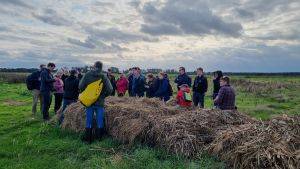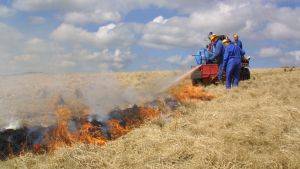Ysbyty Estate - Carbon Neutral Catchment
Introduction
The Migneint is an extensive area of blanket bog in central Snowdonia and one of the largest stores of carbon in Wales. While currently extensively drained and ditched, it has the potential to become a nationally important carbon sink if the appropriate management regime is identified and implemented.
Description
The Ysbyty Estate is one of the largest agricultural estates in Wales and possibly the largest estate in National Trust ownership. Extending to some 8,000 ha, the estate includes enclosed farmland, as well as a mountain and moorland extending to over 600 metres above sea level. The Upper Conwy Catchment project is working to restore the Ysbyty Estate back to a healthy and robust catchment with well managed soil and water resources, including a fully functional peat bog ecosystem. Most importantly, the project emphasises the importance of this system existing alongside a viable and vibrant agricultural community, and a widely held recognition of the natural and cultural heritage interest of the area.
Project Aims
The National Trust is planning to develop a Ysbyty Estate Carbon and Energy Plan and is currently researching the potential to harness the rivers, at the confluence of the Serw and the Conwy, in order to create hydroelectric power for the site. Plans for the future place estate tenants at the forefront of technology, and demonstrate that traditional Welsh farmhouses can be sustainable and carbon neutral. Significant investments have been made in the local community, including insulation of all farmhouses and cottages, where practical, with wool product sourced from Wales. The agricultural estate will be an exemplar of holistic catchment and soil management, providing a spectrum of ecosystem services and good traceable food to feed a growing population.
Restoration Delivered
Approximately 270 km of ditches have been blocked by peat dams and re-profiled between January 2011 and February 2012. Grip blocking large areas of the Migneint will have long-term beneficial impact on habitat restoration, flood management and carbon sequestration. The significant majority of the grip-blocking work has been undertaken by local contractors who are either tenants on the estate or have direct linkages with the tenants and the local community. This has forged strong support for the work, and communication between tenants and the contractors has provided a greater level of understanding about the work.
Site Activity
The project is working to improve soil and water management practices in the catchment area and restore and improve the condition of the peat and the habitats by:
- Blocking grips in core areas of drained peat
- Stabilising areas of eroded peat
- Developing a fire prevention plan and an action plan for an outbreak of wildfire including fire- breaks and cutting heather in some areas to reduce risk
- Developing sustainable farming systems and adding value to the agricultural produce
- Identifying and taking action to reduce farm pollution risks
- Improving the fisheries habitat
- Introducing river corridor management e.g. floodplain woodland
- Implementing the Countryside Council for Wales’ Upland Framework A LiDAR (Light Detection and Ranging) survey has allowed the catchment to be broken down into high, medium and low priorities for peatland action, overlaid with nature conservation priorities.
Project Name: Ysbyty Estate - Carbon Neutral Catchment
Organisation / Lead partner: National Trust
Location: Dinas, Betws y Coed, Conwy
Predominately: Upland









